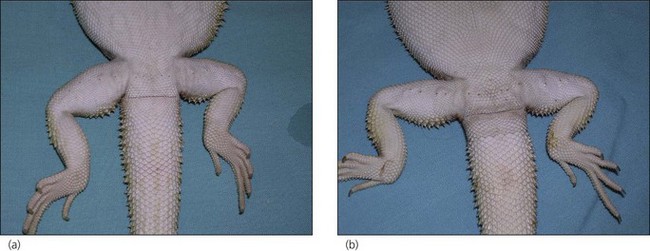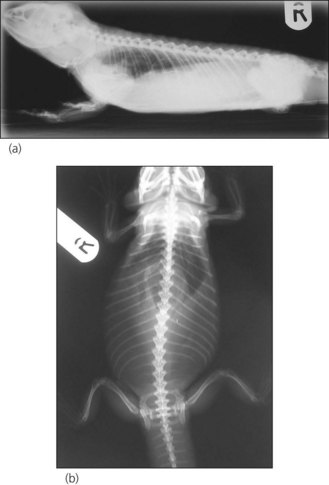17 Bearded dragon with hepatic disease
Introduction
CASE PRESENTING SIGNS
A 1-year-old male bearded dragon (Pogona vitticeps, Box 17.2) presented with a 2 week history of reduced appetite and dysecdysis, and 1 day of dyschezia.
BOX 17.2 Ecology of bearded dragons
Husbandry
A ceramic bulb, attached to a thermostat, provided supplemental heating. A digital thermometer was used to monitor temperature variations, and showed an ambient temperature in the enclosure of 21°C with a basking temperature under the bulb of 35–41°C. A UV striplight was provided (Box 17.1), positioned approximately 30 cm above the substrate. The light cycle was routinely 12 hours/day.
BOX 17.1 UV lighting for reptiles
Clinical Examination
Initial examination on presentation revealed:
DIFFERENTIAL DIAGNOSES
The differentials for dyschezia are
Case Work-Up
Radiographs
Two projections were taken, a dorso-ventral view using a vertical beam and a lateral view using a horizontal beam (Fig. 17.2). Gas was present within the gastrointestinal tract, but there was no evidence of foreign bodies or other obstruction. There was a suspicion of respiratory disease, with patchy lung fields present (although no respiratory signs had been noted). Increased abdominal volume suggested the presence of faeces, a mass lesion or effusion. A lack of serosal detail precluded a clear picture of the gastrointestinal tract, and may have reflected the presence of fluid or inflammation.
Stay updated, free articles. Join our Telegram channel

Full access? Get Clinical Tree




